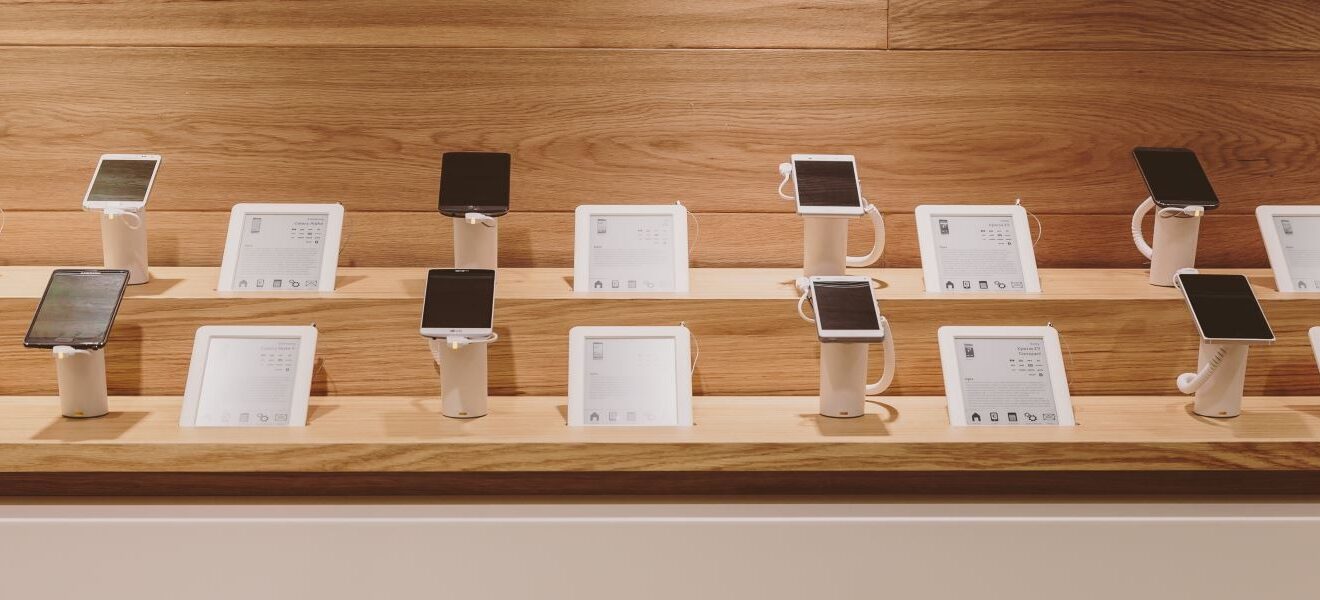

Smart shelf labels, the retail game changer
Visionect, 28 Feb 2016
Electronic shelf labels are a key component of the future of offline retail. Supporting real-time analytics of shopping behavior, they open the door to next generation services and convert visitors to customers – a fact that Telekom Slovenije is more than aware of.
“The most antiquated processes in modern retailing”
Last year, when Panasonic introduced its version of the electronic shelf label, the company’s CEO explained the need for a smart merchandising solution by saying that “the paper tag and manual inventory management processes employed today are arguably the most antiquated processes in modern retailing.”
Smart electronic shelf labels resolve traditional brick and mortar bottlenecks and introduce a new generation of services and revenue opportunities.
It is this lack of technological empowerment that is at the core of many ongoing retailer issues such as out-of-stocks, manual price coordination and inventory. Add to this antiquity the inability of offline retail to track customer behaviour in real time, adjusting a store’s offer accordingly, and you have an environment that is struggling to keep up with the convenience of online shopping.
Problematic, when you take into account that in the next five years offline sales are still projected to generate the bulk of consumer products companies’ revenue – 81% to be exact.
Representing a key link in the future of the on-site retail chain are smart electronic shelf labels (ESL for short), resolving traditional brick and mortar bottlenecks and ushering in a new generation of services and revenue opportunities.
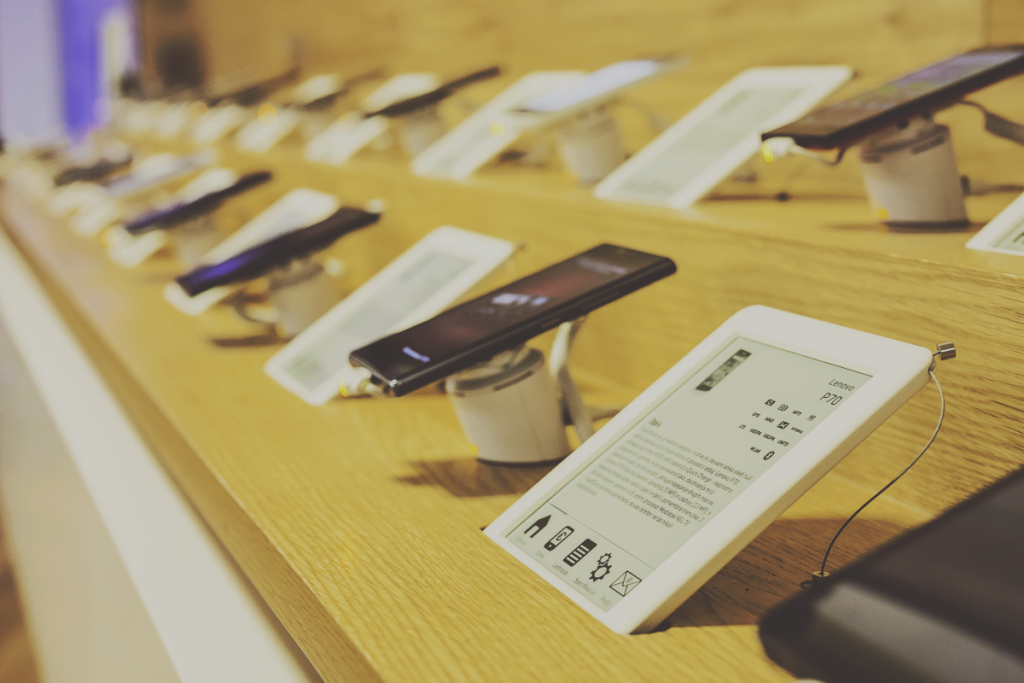
The product information displayed on Visionect’s smart shelf labels allows TS’ stores to be always up to date, and helps the company gather feedback from the shop floor, converting visitors into clients.
Telekom Slovenije, converting visitors into clients
A best practice example of how smart shelf labels can elevate retail is TS, one of the largest telecoms providers in South-Eastern Europe. With multiple stores across the region, the company wanted to harmonize their retail presentation and make sure that the product information displayed was always up to date, as well as gather feedback from the shop floor, learning how to better convert visitors into clients.
In 2014 TS began the process of equipping its stores with smart electronic paper shelf labels made by Visionect.
In 2014 TS began the process of equipping its stores with smart electronic paper shelf labels. These replaced printed paper slips with prices and descriptions of the different phones available, which were often hard to keep accurate across different locations. E-paper was chosen due to its readability (think Kindle with its clarity of printed word on paper) and a battery life that far surpasses that of LCD. Not to mention the fact that the sleek, elegant e-paper tablets don’t distract the customer from what should be the main focus – the smartphone or tablet on sale.
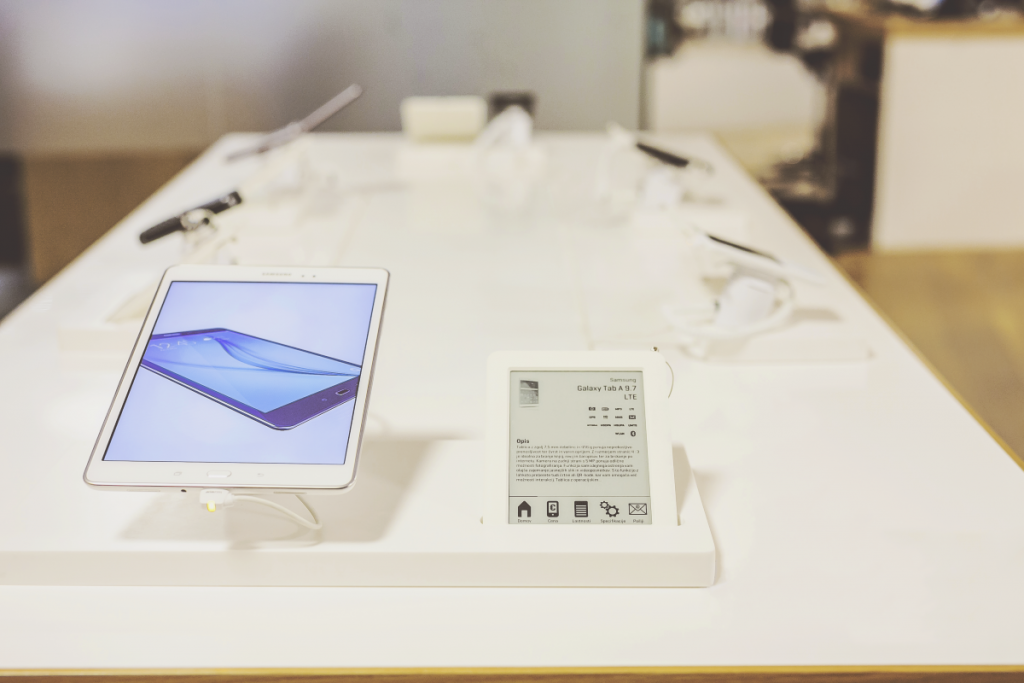
The electronic ink datasheets blend with the store’s interior and don’t distract from the products on display. A long-lasting battery life allows for a presentation that requires no access to a power source.
Real-time price adjustments and information that is always in sync
The main issue that TS wanted to resolve was the need to print and manually change the information leaflets in their physical stores, a process that was bleeding man hours and often resulted in mismatching data and prices.
No wonder: mislabeling is a serious issue for retailers across the globe, with The New York Times reporting that in most stores paper price labels are only 95% to 96% accurate. With 10,000 price changes across 1,000 stores, this can result in as much as 10 million instances of pricing errors, at great expense for the retailer.
“The e-paper shelf labels really helped us keep tabs on what is happening across all of our stores, by keeping prices and information harmonized no matter the store’s location, with a unified look and feel,” comments Jeff Pivac, TS’s strategic marketing expert.
TS’ smart shelf labels, now implemented across all of their retail stores, give the company the ability to wirelessly update price tag and data sheet content from a central location, without the need to print or manually change the information. This not only reduces the personnel expense, but also ensures that the information available to the customer in a particular store is always in sync with the information provided online, including different promotions, discounts and price reductions.
“The e-paper shelf labels really helped us keep tabs on what is happening across all of our stores, by keeping prices and information harmonized no matter the store’s location, with a unified look and feel,” comments Jeff Pivac, TS’s strategic marketing expert.
Understanding the customer with built-in analytics
In a perhaps most crucial feature Visionect’s e-paper shelf labels also allow TS to track customer behaviour on the shop floor, in a process parallel to e-commerce.

The e-paper shelf labels across TS stores allow customers to browse product information, see a phone’s technical details and check the price of each item on sale. Integration with an analytics tool enables the retailer to keep track of the consumer interest and adjust the retail strategy accordingly.
It is vital for retailers to understand how users move and behave in their store, analyzing the ‘sweet spots’ where visitors are converted into clients. While surveys, focus groups and interviews can provide a detailed picture of consumer behavior, they demand a lot of time and financial resources, and cannot yield results in real time.
The e-paper shelf labels reduce the personnel expense and ensure that the information available to the customer in a particular store is always in sync with the information provided online.
The smart shelf labels in TS’ retail outlets are all integrated with Google Analytics, tracking consumer interest in real time and providing the company with insight into the user experience. The e-labels displaying product features track how customers engage with a certain product on sale, with all interactions detected and analyzed as they happen. The intelligence gather is used to customize the shopping experience, enhancing a customer’s interaction with a store.
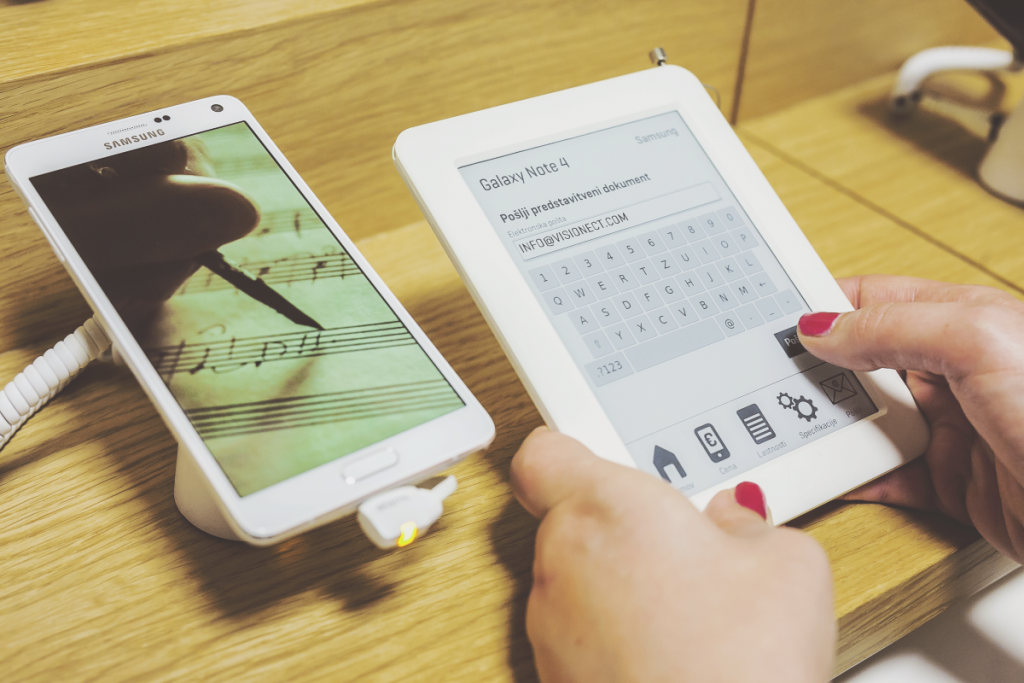
Want to read the product sheet at home? The interactivity of the TS smart shelf label allows shoppers to forward the information displayed on the electronic ink tablet to an email address of their choice.
Even more: advanced predictive analytics obtained through smart shelf labels also allow stores to change their pricing strategies in real time, based on changing market conditions. Monitoring consumer behaviour, retailers can change prices and their retail strategy as often as necessary, in a dynamic pricing process that takes with very little effort.
The way forward
Examining TS’ success story, there is very little doubt that the future of offline retail lies in an omni-channel experience, with interconnected smart price shelves revitalizing stores and optimizing revenue per square foot by allowing for seamless online integration of all offline retailing processes.
The smart shelf labels in TS’ retail outlets are integrated with an analytics tool, tracking consumer interest in real time and providing the company with insight into the user experience.
The case for retailers lies in optimizing brick and mortar point of sales and generating successful revenue streams. And it pays off: a report by Ernst & Young calculates that over a 10-year period, an average US grocery store with 46,000 square feet of space and about 100,000 smart shelf labels, could, with annual sales of $50m, benefit from incremental sales of over $15m.
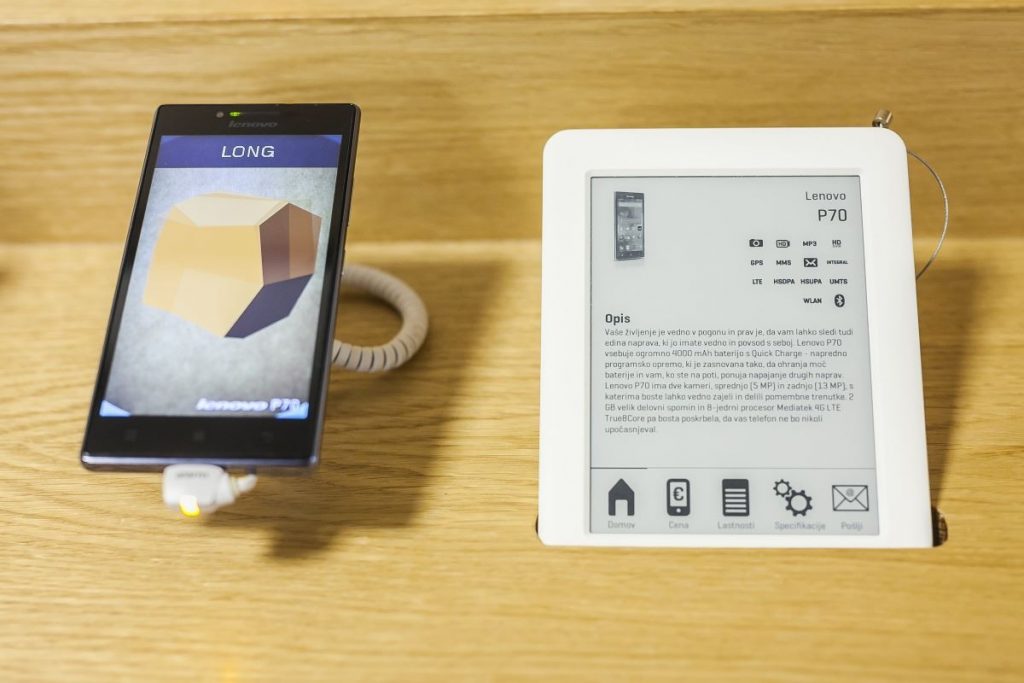
The case for retailers lies in optimizing brick and mortar point of sales with smart shelf labels, allowing for seamless online integration of all offline retailing processes.
Photos: Aleksandar Domitrica
Header image courtesy of Telekom Slovenije, photo by Jani Ugrin
Tags

